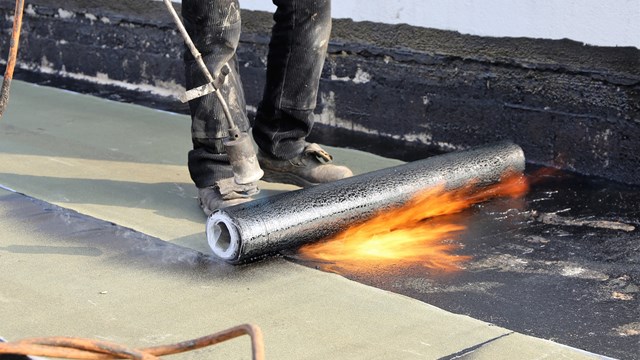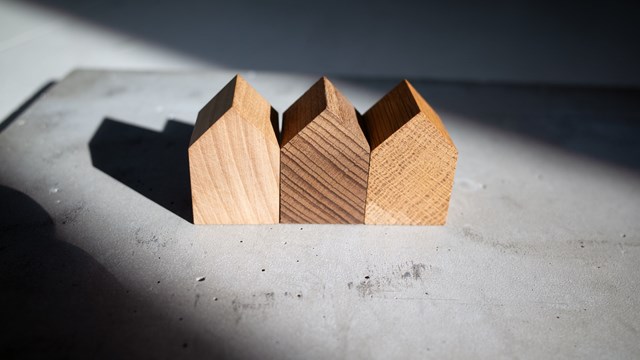As Budgeting Season approaches for co-op and condo communities, it’s time for the boards of associations and corporations to consider how they will cover expenses and fund projects in the coming year and beyond. While recurring operating expenses like taxes and staff payroll are always at the forefront of such considerations, strategies for meeting longer-term expenses - annualized maintenance and capital projects especially - also must be put in place to achieve best results. CooperatorNews spoke to an interior design professional to get a sense of how boards can plot out larger investments in their communities’ curb appeal, and to an accountant to discuss the money side of the equation.
The Pecking Order
When it comes to the allocation of a co-op or condo association’s funds, there is a real pecking order for what work gets done in what order. A leaking roof will always take precedence over an aging paint job in the interior hallways. That being said, common area design and the maintenance thereof are important factors in the saleability of individual apartment units. A dated, threadbare look to your building will negatively affect the market price of the units inside it - so boards neglect aesthetics at their peril. And like all major capital components of a multifamily property, design elements and their maintenance and replacement can - and definitely should - be planned for in advance.
The Useful Life of Things
Marilyn Sygrove, president of Sygrove Associates Design Group, an interior design firm based in New York, breaks down maintenance considerations into three categories: annual (six months to one year), three to five years, and finally 10 to 20 years. According to her, “Annualized upkeep for common areas on an ongoing basis should include repainting of surfaces such as doors, door casings, crown moldings and ceilings where necessary, and cleaning globes on ceiling fixtures and wall sconces.” She says this timeframe also applies to wooden elevator interiors and lobby paneling, which thanks to normal wear-and-tear may also need cleaning and polishing.
The three-to-five-year category for maintenance and replacement includes items like vinyl wall coverings and lighting fixtures, and any improvements over time that will increase their energy efficiency, explains Sygrove. “Vinyl wall coverings will need to be repaired and cleaned, and improvements in lighting technology efficiency will add savings while extending the life of your fixtures.”
Past this point, the maintenance and replacement of design elements usually becomes a capital project, and should therefore be considered on a 10 to 20-year schedule. “This is the time to redo your hallways, and oftentimes your lobbies too,” says Sygrove. Why is that? “Styles and design preferences change,” says Sygrove. “It’s as simple as that. The brand of your building is rooted in its appearance and style. Your carpet may have a 10-year warranty that it won’t wear out, but that’s no guarantee as to when it will ‘ugly’ out. Furniture also may need to be replaced, and the technology used at the concierge desk or doorman’s station may require updating.” On a larger scale, “You may find that you require more package space, which in turn requires a redesign of the lobby area.”
How to Budget
Karen Sackstein, an accountant with Westwood, New Jersey-based firm Jilleba & Libock specializes in condominium association finances. She explains some of the intricacies of accounting for these items: “Regular lobby maintenance would be included as a budget line item in an association’s annual operating budget,” she says. “This would encompass things like cleaning and trash removal services. Something like painting a lobby would typically be a deferred maintenance item – defined as a non-capital expenditure that occurs less often than annually. Associations can include an operating budget line item for deferred maintenance, segregate those funds, and then pay the expenditure from those accumulated deferred maintenance funds as needed.” By contrast, Sackstein says that a full-on lobby renovation would be a capital expenditure, and so would be paid for out of the association’s reserve fund.
“Ideally,” she continues, “all should be budgeted annually, either via a line item for the specific operating expense - say lobby maintenance - or a line-item contribution for deferred maintenance or reserve contributions. For example, if painting happens every five years and costs $20,000, then there would be a deferred maintenance painting contribution of $4,000 each year.”
Sackstein stresses that regularly setting aside funds for longer-term items over the course of their useful lives is the best way to ensure financial stability for the association and minimize the need for special assessments or borrowing down the road. It’s also the fairest way to match the cost and benefit of these projects to unit owners. This can best be achieved by commissioning regular reserve studies and basing budgeting and reserve funding on what those studies recommend. She advises having a reserve study done every three to five years, and then incorporating the engineer’s funding recommendations into each annual budget.
“The responsible and practical thing for boards to do,” says Sygrove, “is to work with their property manager, superintendent, and accountant to plan for consistent regular maintenance of all of the finishes, lighting, furniture, and accessories and their costs so that buildings can always look its best, no matter how many years ago a renovation was done.”
Proper financial planning is as important for maintaining the look of a co-op or condo building as it is for maintaining the most critical operating systems. Far from just keeping up appearances, maintaining a fresh, well-cared-for atmosphere in common areas is a key component of your community’s resident and staff morale, as well as real-world property values.










Leave a Comment